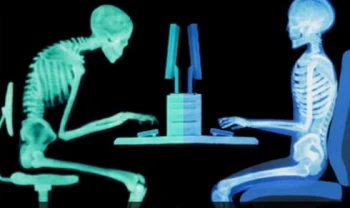
A lot of individuals are familiar with a “slipped disc” in the low back, but fewer people know that you can have the same condition in the cervical spine. “Slipped disc” is common terminology, but doesn’t accurately describe the situation. A herniated disc is a structural condition of the spine that involves the weakening and tearing of the intervertebral disc. Many people with a neck herniated disc experience intense pain and are unsure of the cause. This can certainly be frightening and lead to a delayed diagnosis.
When it comes to spinal structure, there are various issues to consider. The bones are the segments of the spine that form the structural framework. These bones are held together by ligaments, muscles, and other connective tissues. Between the spinal bones are the intervertebral discs (IVD’s). These discs serve a few important functions in the spine, mainly spacing and cushioning.
The cervical spine is the neck region of the spine. This area is unique when compared to the mid and low back in a few key areas:
- It is the most flexible part of the spine
- It is the most sensitive part of the spine (most nerve involvement)
- It has smaller more fragile segments
The discs in between the segments of the cervical spine are an important part of maintaining structural integrity, adequate spacing, and normal movement. When the discs of the neck sustain damage, the integrity, spacing, and movement of the neck are negatively affected.
So of the most common stresses to the discs of the neck are motor vehicle collisions, whiplash, and poor posture. The consequences of these abnormal stresses to the discs of the neck are degeneration, thinning, and subsequently pain. Common symptoms of neck herniated disc include:
- Neck pain/stiffness
- Shooting nerve pain
- Arm/shoulder pain
- Numbness/tingling in the arms or hands
- Limited and uncomfortable neck movement
Neck herniated disc symptoms can develop slowly over time while increasing in intensity, so it is easy to miss the early stages of neck disc herniation.
How does a neck disc herniation occur?
Under normal circumstances, the discs of the spine do not herniate. A herniation is a situation that involves damage to the outer covering of the disc. This allows the pressurized inner contents of the disc to protrude outward. This can cause the nerve bundle adjacent to the disc to become compressed. The most common neck disc herniation is at the C5 or C6 level. These are the 5th and 6th segments of the neck (counting down from the skull). This part of the neck experiences the brunt of the force when involved in a car accident, whiplash, sports injury, or other jarring force. When these forces displace the spinal segments away from their normal alignment, the pressure upon the discs increases beyond its tolerance. Over time this abnormal pressure causes premature aging of the disc. Neck disc herniation is a byproduct of this process much like a rubber band will snap when it’s overstretched.
There are rare and extreme circumstances in which this type of injury requires emergency intervention. The vast majority of neck disc herniation falls into the category of a chronic problem. Neck disc herniation does often manifest in the symptoms listed above, but the intensity and timing of the symptoms vary slightly on a case-by-case basis. Receiving adequate treatment depends on an accurate diagnosis, so seeking professional help early is essential for maximal recovery.
Neck herniated disc can be diagnosed with spinal imaging such as MRI. An MRI study can identify the level, location, and stage of neck disc herniation more accurately than symptomatic presentation. A high-quality digital x-ray can also identify the stages of spinal degeneration which correlates with the risk of neck disc herniation and the expectation of maximal recovery.
For many individuals with neck herniated discs, conservative care is the best option. It stands to reason that if the neck disc herniation is a byproduct of improper alignment and stress in the cervical spine, correcting these issues leads to the resolution of symptoms and delays progression.
There are a variety of treatment options for neck disc herniation. Most conventional approaches are focused on symptom alleviation rather than cause correction. At first, it is common to be prescribed muscle relaxers or pain medications. If those fail, physical therapy is often the next step. Once these options have been exhausted more invasive procedures enter the picture, such as injections or surgery.
An effective alternative option for neck disc herniation is Blair Upper Cervical Chiropractic. This unique branch of chiropractic is focused on detecting and correcting structural shifting of the neck. Using state-of-the-art technology, Blair Upper Cervical Chiropractors seek to identify a specific area of the cervical spine responsible for the greatest amount of stress.
By focusing on this primary problem, Blair Upper Cervical Chiropractors can help patients identify the cause of their symptoms and the solution to obtaining lasting relief naturally. A feature that differentiates Blair Upper Cervical Chiropractic from conventional chiropractic methods is the ability to perform precise and effective adjustments without twisting, popping, or cracking the neck. This is especially beneficial for patients with neck disc herniation due to the pain, muscle spasm, and stiffness that accompanies a neck disc herniation.







Leave a comment